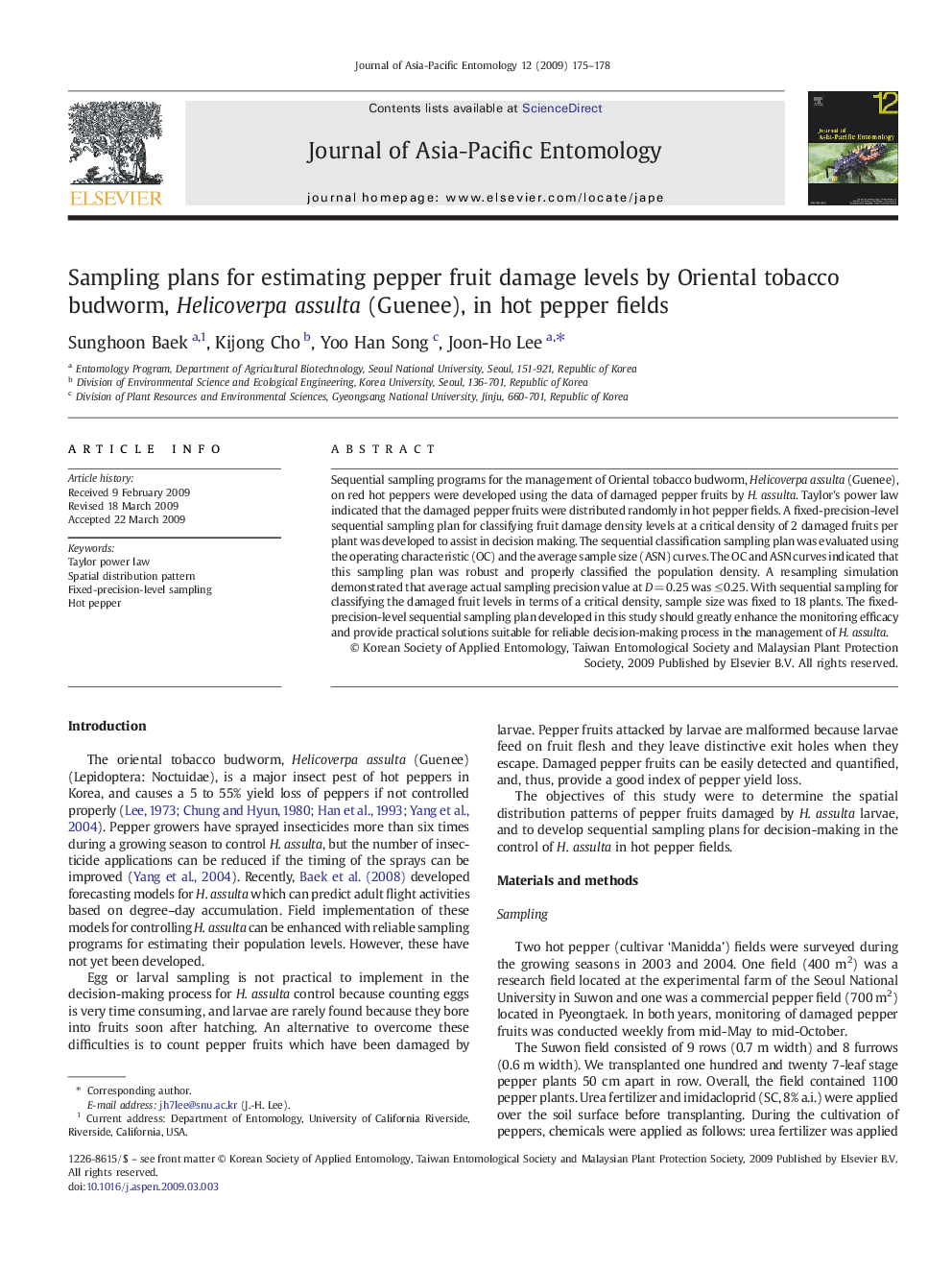| Article ID | Journal | Published Year | Pages | File Type |
|---|---|---|---|---|
| 4525007 | Journal of Asia-Pacific Entomology | 2009 | 4 Pages |
Sequential sampling programs for the management of Oriental tobacco budworm, Helicoverpa assulta (Guenee), on red hot peppers were developed using the data of damaged pepper fruits by H. assulta. Taylor's power law indicated that the damaged pepper fruits were distributed randomly in hot pepper fields. A fixed-precision-level sequential sampling plan for classifying fruit damage density levels at a critical density of 2 damaged fruits per plant was developed to assist in decision making. The sequential classification sampling plan was evaluated using the operating characteristic (OC) and the average sample size (ASN) curves. The OC and ASN curves indicated that this sampling plan was robust and properly classified the population density. A resampling simulation demonstrated that average actual sampling precision value at D = 0.25 was ≤ 0.25. With sequential sampling for classifying the damaged fruit levels in terms of a critical density, sample size was fixed to 18 plants. The fixed-precision-level sequential sampling plan developed in this study should greatly enhance the monitoring efficacy and provide practical solutions suitable for reliable decision-making process in the management of H. assulta.
